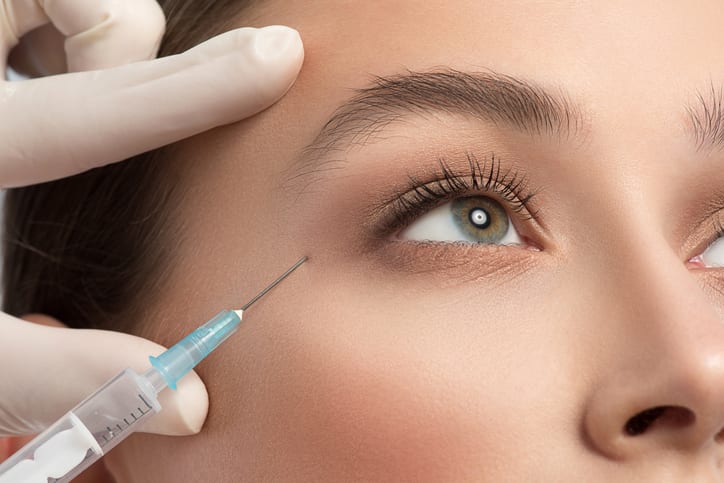Botulinum toxin, more commonly known as Botox®, is one of the most effective ways to reduce wrinkles, fine lines, and other signs of aging. Although historically touted as a cosmetic procedure, the latest research on Botox has highlighted several other significant medical benefits.
In Berkeley, CA, for example, Botox training and certification programs are at the forefront of this medical revolution, training technicians in ground-breaking techniques that can resolve everything from back pain to dental woes.

Here are five surprising benefits of Botox you need to know.
- Excessive Sweating Treatment
Excessive perspiration, also known as hyperhidrosis, affects roughly 1% of the population. The condition causes those affected to experience significant sweating of the palms, armpits, and feet, even where no exertion has occurred. Although not dangerous, those impacted often report considerable embarrassment and increased stress in social situations that can lead to a lower quality of life.
Botox can offer effective relief through 10 to 20 small injections to the affected areas. Numbing cream is typically offered to reduce any discomfort. The process works by inhibiting the release of the neurotransmitter, acetylcholine, which stimulates the sweat glands. One treatment can last several months and is non-invasive enough for most clients to return to work right away.
- Migraine Relief
Often accompanied by severe nausea and visual disturbances, migraine headaches can leave sufferers completely unable to engage in their normal daily routines. Since 2010, clinicians have been exploring the use of Botox in treating adults experiencing chronic (15 days per month or more) migraine pain.
When Botox is administered to the head and neck every 12 weeks, patients have reported dramatic improvements in their headache symptoms. One study found that almost half of the individuals who completed two rounds of Botox reported the number of days they experienced a migraine each month was reduced by half.
Although the exact science is still being explored, clinicians speculate that Botox blocks the neurotransmitters responsible for carrying pain signals to the brain, halting them in their tracks before sufferers can register the discomfort.
- Overactive Bladder Treatment
An overactive bladder can be a source of both discomfort and embarrassment. In instances where medication and pelvic floor physiotherapy have not adequately alleviated symptoms, Botox may be a viable treatment option.
To treat the condition, a qualified medical professional injects Botox via a cystoscope (a tiny telescopic camera) into 20 to 30 locations inside the bladder muscle. This process temporarily inhibits the release of acetylcholine, the neurotransmitter responsible for the muscle contractions associated with the urgency to urinate.
The procedure can be completed as day surgery, with the patient under general or local anesthesia. Repeat treatments are generally needed every few months, depending on the severity of the patient’s symptoms.
- TMJ Disorder Management
TMJ (or Temporomandibular Joint Disorder) is a disorder of the temporomandibular joint. The temporomandibular joint connects the skull and jawbone and is necessary for movements such as speaking, chewing, and swallowing. TMJ sufferers typically report frequent tension headaches, bruxism (teeth grinding) and generalized jaw pain.
In severe cases, especially where dental damage is likely, Botox may be recommended off-label. In as little as 15-30 minutes, a licensed practitioner can inject a series of small injections into the forehead, temples, and jaw to relax and release the impacted muscles. Once these muscles are paralyzed, they are less able to unconsciously clench and create the tension responsible for most TMJ pain.
- Blepharospasm Treatment
Around 50,000 people in the U.S. live with blepharospasm, a rare neurological condition that impacts the ability to control the muscles required to open and close the eyelids. In advanced cases, people with blepharospasm may experience such severe symptoms (such as eyelid twitching) that their capacity to drive, watch TV, or even get around independently can be compromised.
Alongside tinted glasses and medication, Botox can be a highly effective treatment option. By administering Botox to the overactive muscles around the eyes, the neurotransmitter in charge of muscle contractions can be temporarily blocked. This can lead to an immediate reduction in the frequency and severity of spasms experienced by patients. Botox treatments for blepharospasm generally last a few months and repeat injections will be required for ongoing management of the condition.
Botox is well known for its ability to improve the appearance of fine lines and wrinkles, but consumers and health professionals are only now discovering the true extent of its other applications. Through ongoing research, we expect to see Botox become a front-line treatment for even more life-altering conditions in 2023 and beyond.



